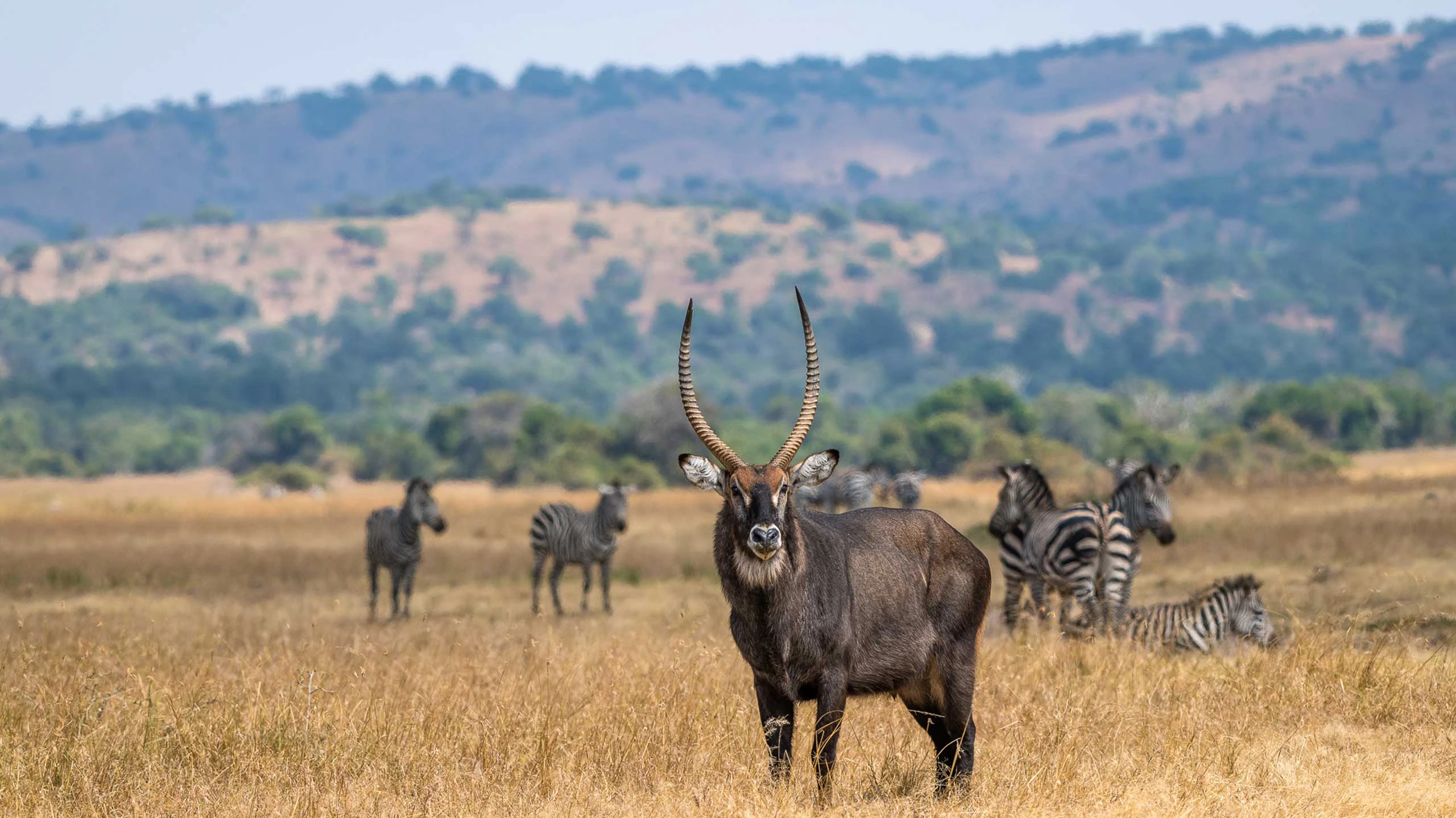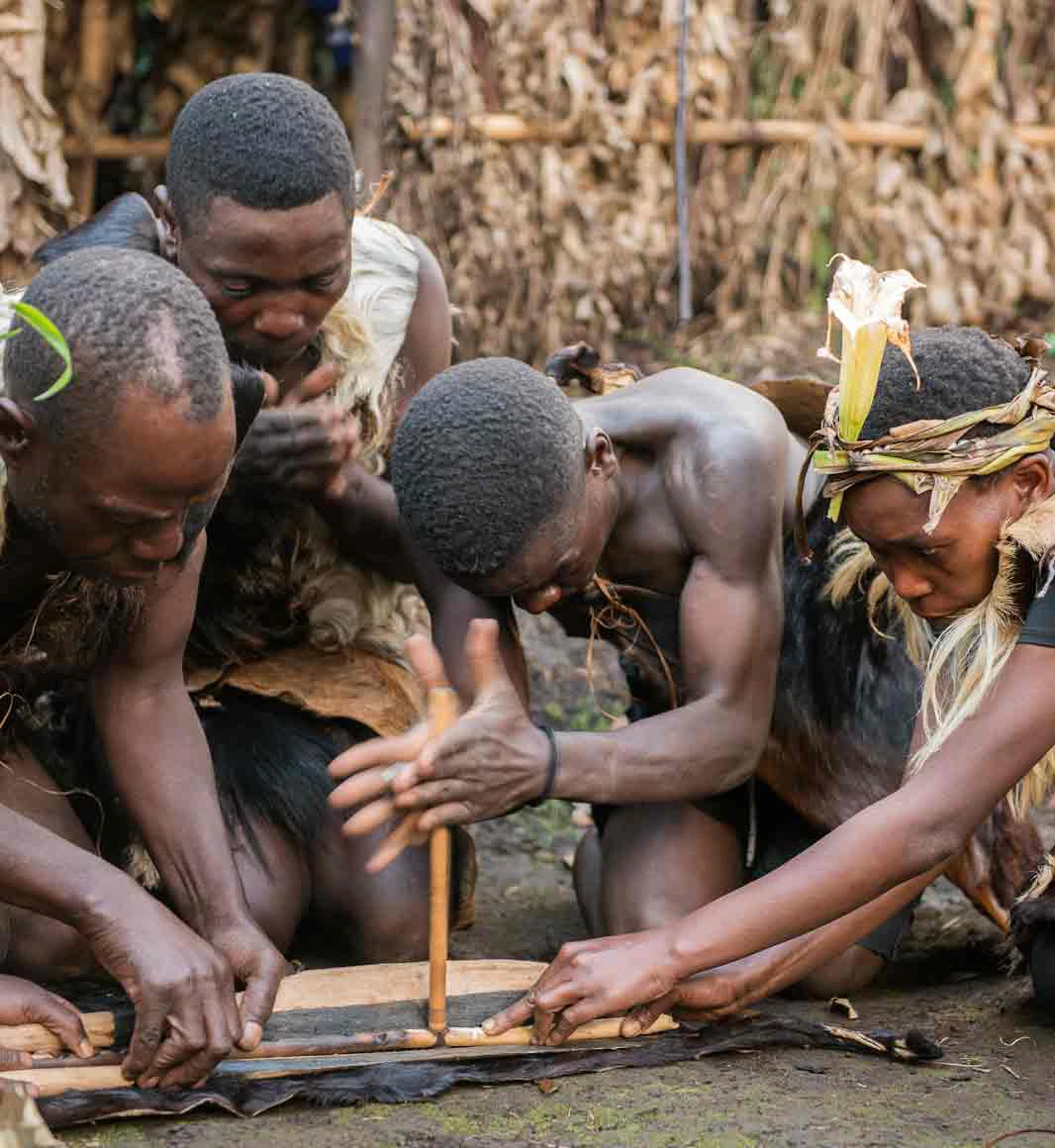
© Singita Kwitonda Lodge

© Sanctuary Gorilla Forest Camp
Why take a luxury gorilla trekking safari to Uganda or Rwanda?
Whether you choose Rwanda or Uganda for your gorilla safari, you will experience pristine forests, world-class lodges, and exclusive encounters with these endangered creatures. Whether you are drawn to Uganda’s dramatic landscapes and rugged trekking routes or Rwanda’s ease of access and luxury lodges, both destinations provide the perfect combination of adventure, privacy, and exclusivity. Below, our gorilla trekking specialist, Sian, discusses the similarities and differences between gorilla trekking in each country. As always, please do get in touch with our gorilla safari specialists for detailed advice tailored to your needs.
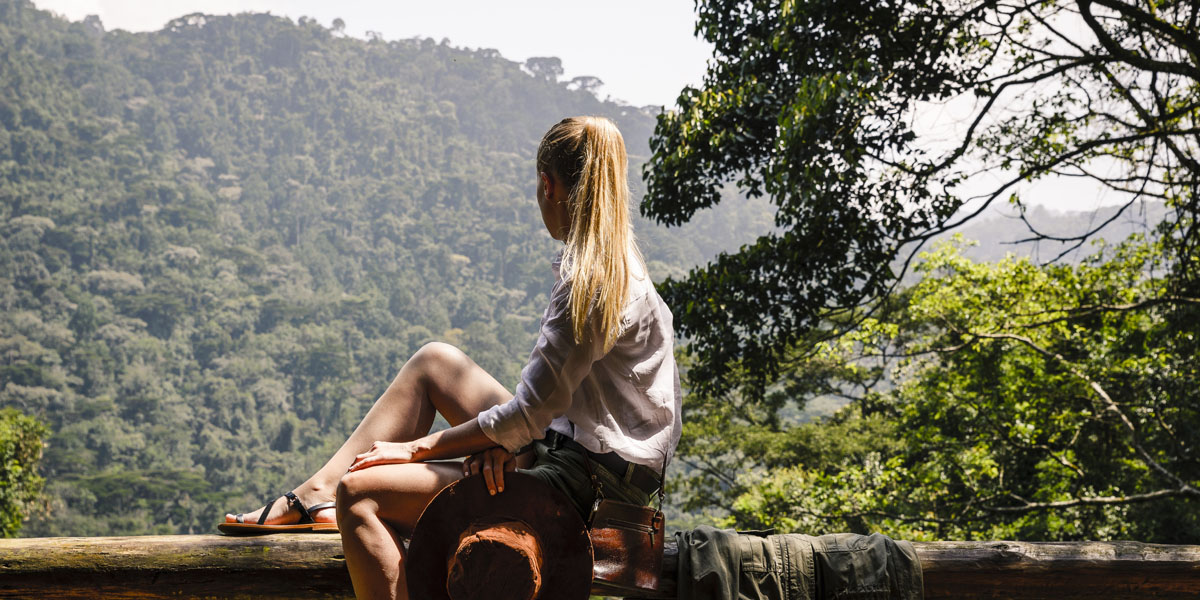
Gorilla Trekking in Uganda: The Ultimate Wilderness Adventure
For those seeking a luxury gorilla trekking experience with a sense of adventure and seclusion, Uganda stands out. The mystical Bwindi Impenetrable Forest, on the edge of the Albertine Rift, provides a rugged, off-the-beaten-path encounter with nature. You can also trek in the smaller Mgahinga Gorilla National Park, located on the border with Rwanda and Volcanoes National Park.
Trekking in Uganda is for those who appreciate the thrill of the journey. The terrain can be challenging, hillier in some areas with thick vegetation, offering a sense of accomplishment for adventurous travellers. While some treks may be more demanding than in Rwanda, the lower altitudes, ranging from 1,000 to 2,000 metres, can make them more manageable for some.
Bwindi has five different trekking sectors which adds to its exclusivity, with fewer crowds offering a more intimate wildlife experience as each sector has their own briefing point. The most common option to access Bwindi is to take a scenic light aircraft flight from Entebbe to Bwindi Forest, followed by a 1.5 – 2-hour transfer to your accommodation. Alternatively, you could take an 8-hour drive from Entebbe to Bwindi, spending a few nights in Queen Elizabeth National Park or Kibale National Park along the route to break up the journey.
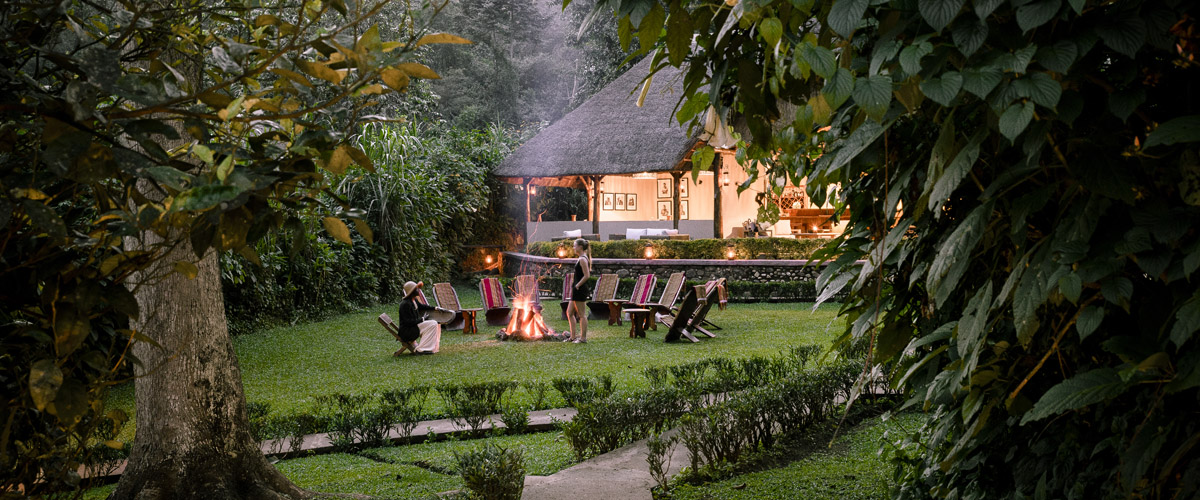
Uganda’s high-end lodges, like Bwindi Lodge, Sanctuary Gorilla Forest Camp and Clouds Mountain Gorilla Lodge, ensure that luxury is never compromised despite the wilderness setting. However, it does have a wider range of accommodation levels from high-end options to more mid-range (Buhoma Lodge or Mahogany Springs) and budget accommodation options, meaning gorilla safaris here can be more suitable for a lower budget than those in Rwanda.
Beyond gorilla trekking, travellers can immerse themselves in golden monkey treks at Mgahinga or enjoy a full-day hike up the Sabinyo Volcano. In Bwindi you can go on forest walks, visit the Batwa Empowerment Village or take a tour of Bwindi Hospital. Many travellers also choose to combine their Bwindi gorilla trekking adventure with a few nights’ stay in Queen Elizabeth National Park.
Gorilla Trekking in Rwanda: The Pinnacle of Luxury and Accessibility
Rwanda has established itself as an ideal destination for luxury gorilla trekking, combining ease of access with top-tier experiences. Nestled in Volcanoes National Park, this iconic gorilla habitat spans the Virunga Mountain range, with its majestic dormant volcanoes and breathtaking views.
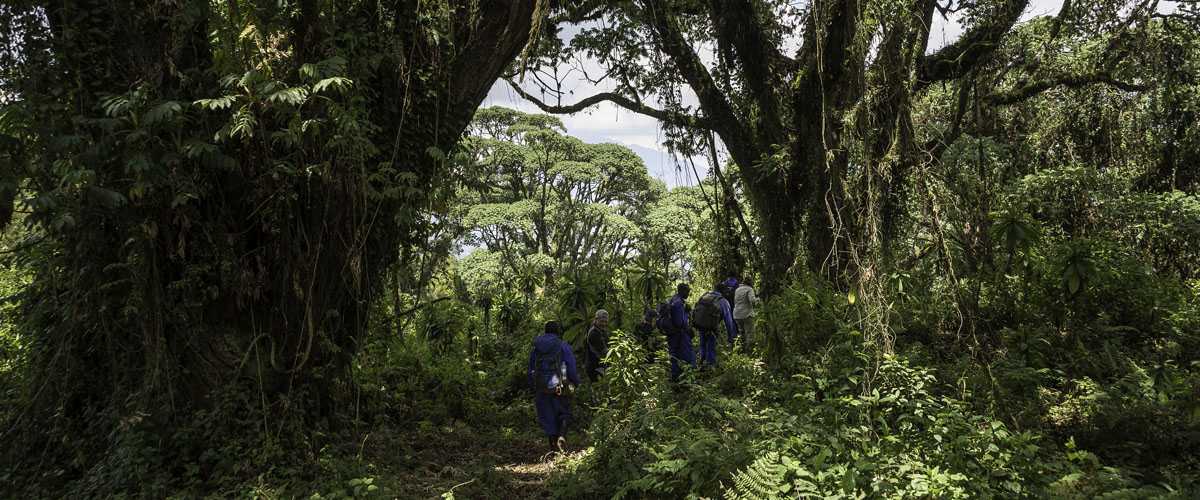
The trekking experience is surprisingly accessible, thanks to the park’s manageable terrain. While the climbs take place at altitudes of 2,500 metres and are quite steep (you’re trekking on the sides of the volcanoes) the trails are generally less forested, with open bamboo groves and minimal undergrowth, making treks often shorter compared to neighbouring Uganda. Getting to Volcanoes National Park is a breeze – just a 2.5-hour drive from Kigali on a tarred road, or a scenic helicopter ride for added luxury.
Rwanda is favoured by luxury travellers and has multiple high-end accommodation options such as Bisate Lodge and Singita Kwitonda, offering unparalleled comfort and personalized service in stunning natural settings.
Beyond gorilla trekking, you have the option to take hikes on the sides of the volcanoes, and can visit Dian Fossey’s and Digit’s gravesites, climb Muhabura Volcano or climb Bisoke Volcano. You can go canoeing, visit a Muzanee cave, explore the Twin Lakes, or embark on golden monkey trekking in Volcanoes National Park. Further afield why not consider spending a few days on a Big 5 safari in Akagera National Park?

Unique guest rooms at Rwanda’s Bisate Lodge
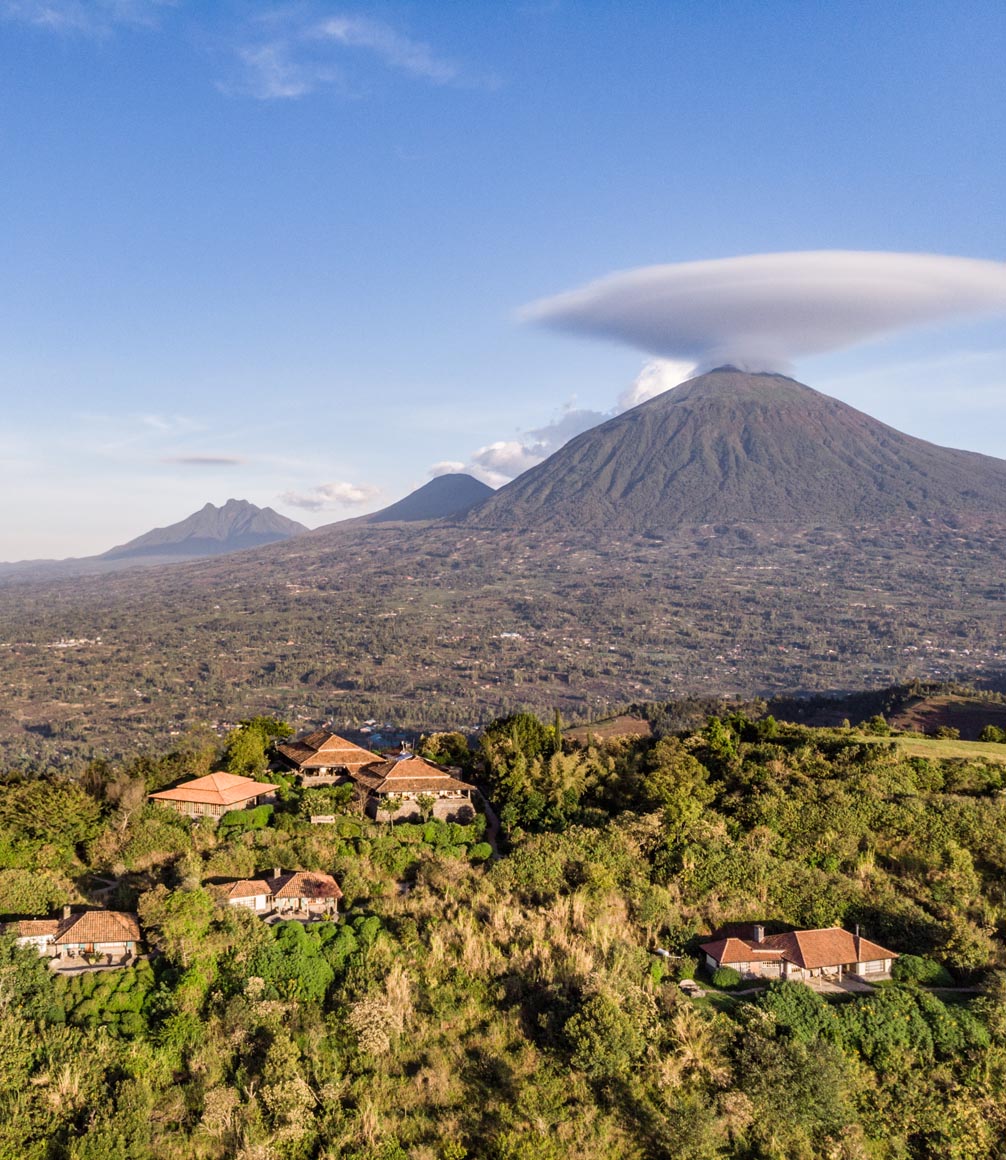
View of Volcanoes National Park in Rwanda from Virunga Lodge (© Sinamatella)

Trekking through Bwindi Impenetrable Forest (© Gorilla Forest Lodge)
Baby gorilla in Bwindi (© Sanctuary Gorilla Forest Camp)
The Wildlife Experience: Gorilla Viewing in Uganda vs Rwanda
When it comes to the best gorilla trekking experiences, both Uganda and Rwanda offer extraordinary wildlife viewing, but the experience does vary.
In both places, you wake early and head to the park headquarters for a briefing. In Rwanda all trekkers meet at one central park briefing point and are divided into groups and assigned a gorilla family to trek. In Uganda, the briefing point varies based on the sector of Bwindi associated with your gorilla permit.
After your briefing, you are divided into groups of eight people maximum, each led by guides, park rangers and trackers. Each group tracks one family of gorillas per day. The trek times vary depending upon where your assigned gorilla family is that day.
Rwanda’s Volcanoes National Park features a bamboo zone due to its high altitude making it a more open, mountainous landscape. In contrast, Uganda’s Bwindi Impenetrable Forest is primary forest, denser and more rugged.
Photography can be better in Rwanda if your gorilla family move to a clearing of bamboo forest, making the light favourable. When they’re in denser forest (in either country), photography can be more challenging due to lower light. Additionally, flash photography is prohibited.
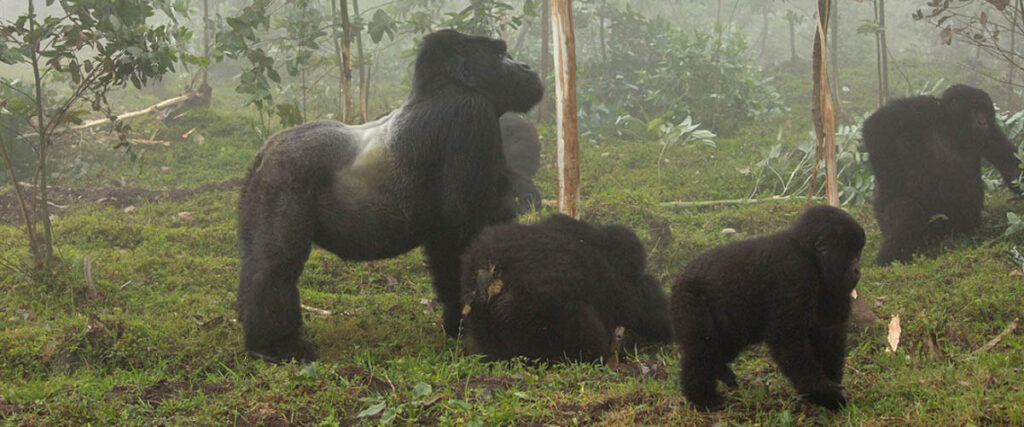
Trekking Permits: Ensuring an Excellent, Seamless Experience
Generally, gorilla trekking in Rwanda is considered the more expensive trekking option compared to Uganda due to the permit price. Permits currently cost $1500 per person for one trek in Rwanda, whereas in Uganda it is $800 per permit. Permits need to be bought well in advance.
Exclusivity and Privacy: Which Country Offers the Most Intimate Experience?
If you are seeking a more exclusive gorilla safari, both Uganda and Rwanda can offer private safari experiences. In Uganda, in addition to the normal gorilla treks, it is possible to undertake a habituation trek where you can spend up to 4 hours following the gorilla family alongside a researcher, learning all about the conservation work and gaining a deep insight into the background of the gorilla family. These habituation treks are in smaller groups, allowing for a more private experience as they take a maximum of four people, compared to eight on a traditional trek.
It is worth noting that these treks can be strenuous and generally take a full day. The gorillas are not fully habituated, so they may be more mobile, meaning you follow them as they move through the forest. Habituation treks cost $1500 per person and are only currently done on the southern side of Bwindi Forest.
In Rwanda, a private gorilla trekking experience is available. This is the same concept as traditional gorilla trekking, however only you or your small group (a maximum of eight people) track the gorillas exclusively with your guide.
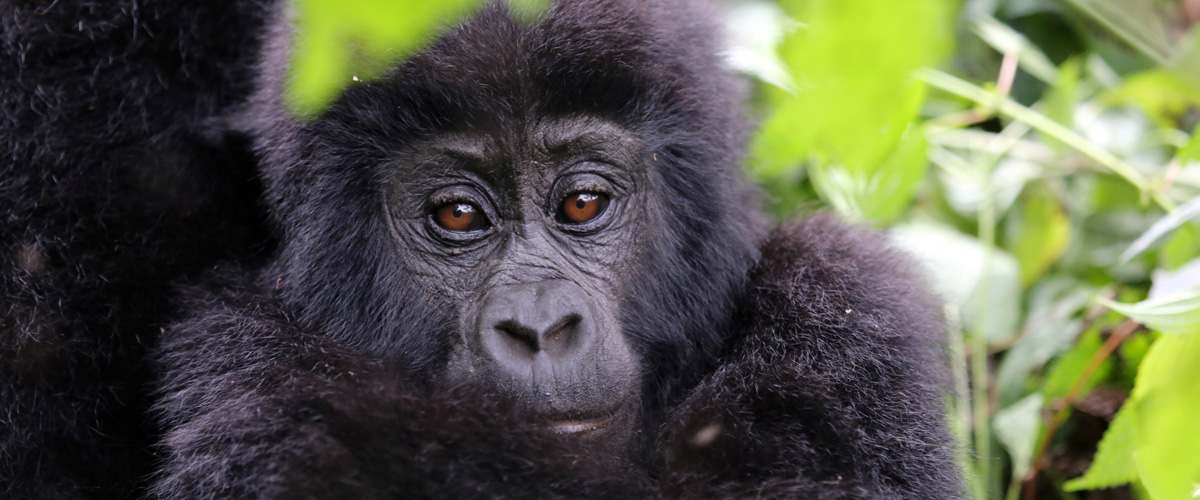
When to Go: Timing Your Luxury Gorilla Safari in Uganda or Rwanda
Gorilla trekking is offered year-round and is considered a year-round activity. However, the drier seasons are June to September and December to February as there is less chance of rain, which can make trekking conditions easier. Keep in mind, gorillas live in the rainforest so it can rain any time of the year.
Conservation and Sustainability: The Impact of Your Luxury Safari
Since gorillas are a critically endangered species, conservation is key, and both countries limit the number of permits sold per day. Each trekking group consist of 8 people maximum. This means there are only a certain number of visitors allowed to track gorillas per day to minimise disturbance to these gentle apes, so it is advised to book trips well in advance! There are also strict rules determining your behaviour during your hour of gorilla viewing, and you cannot trek whilst unwell to minimise risk to the gorillas.
Both Uganda and Rwanda offer opportunities to create a positive impact as part of your safari. We’d encourage you to engage with some of our carefully selected conservation and community projects as part of your luxury gorilla safari.
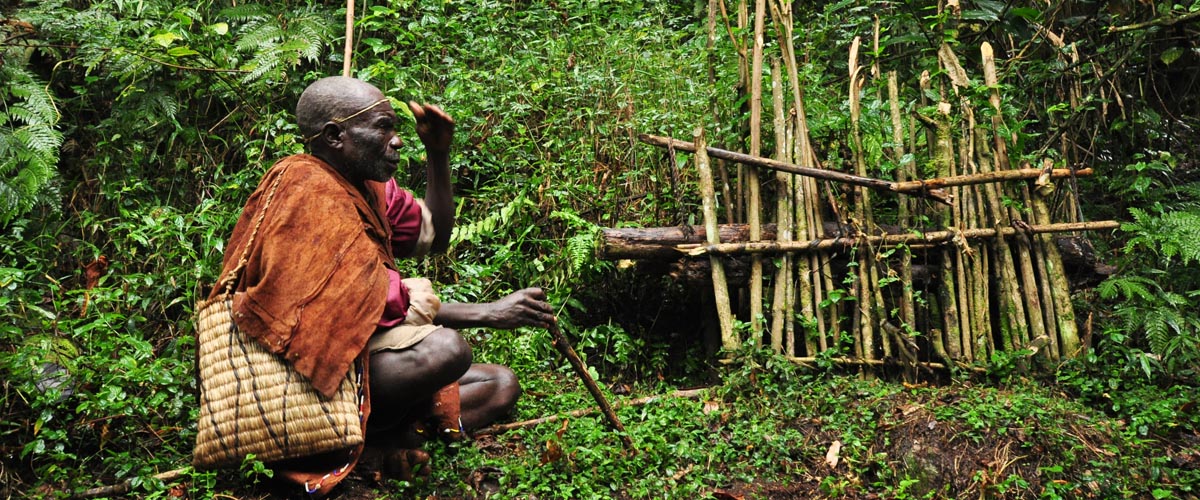
On the Ugandan side you can meet the Batwa pygmies in Buhoma, Nkuringo or Mgahinga areas. This is a meaningful and authentic cultural experience that helps the communities to be self-sufficient and celebrate their traditions and culture.
In Bwindi Impenetrable Forest’s Buhoma area you can visit Bwindi Hospital, which started as a small outreach clinic and now has 155 beds. Take a village tour to visit the medicine man or learn to make banana gin. I’d also highly recommend visiting the incredible project Ride4AWoman, which supports local disadvantaged women through craft-making and other initiatives.
In Rwanda, I highly recommend visiting some excellent charitable projects including the Gorilla Doctors, who perform essential veterinarian care for the gorillas, or the Ellen DeGeneres Campus.
So, which is best for your luxury gorilla trekking safari, Rwanda or Uganda?
This all depends on the type of experience you are looking for. In short, Rwanda offers a structured, easy access and comfortable experience with treks taking between 1-4 hours, meaning you are generally back in your lodge by lunchtime.
Conversely, Uganda offers an adventurous, intimate, off the beaten track experience, due to Bwindi Forest not being as accessible with treks usually taking between 1-4 hours but with a higher risk of some treks taking up to 8 hours, which for some can make the experience even more fulfilling.
If you have time and want to experience both countries then doing a trek in Uganda and Rwanda is the ideal option as you’ll have the chance to see the differences in landscapes, cultures and the gorillas themselves.
In the end, both offer unforgettable, once-in-a-lifetime experiences with excellent guiding. Whichever destination you choose, gorilla trekking leaves you with a sense of connection to nature, reminding us how deeply interwoven we are with the creatures that share this earth.
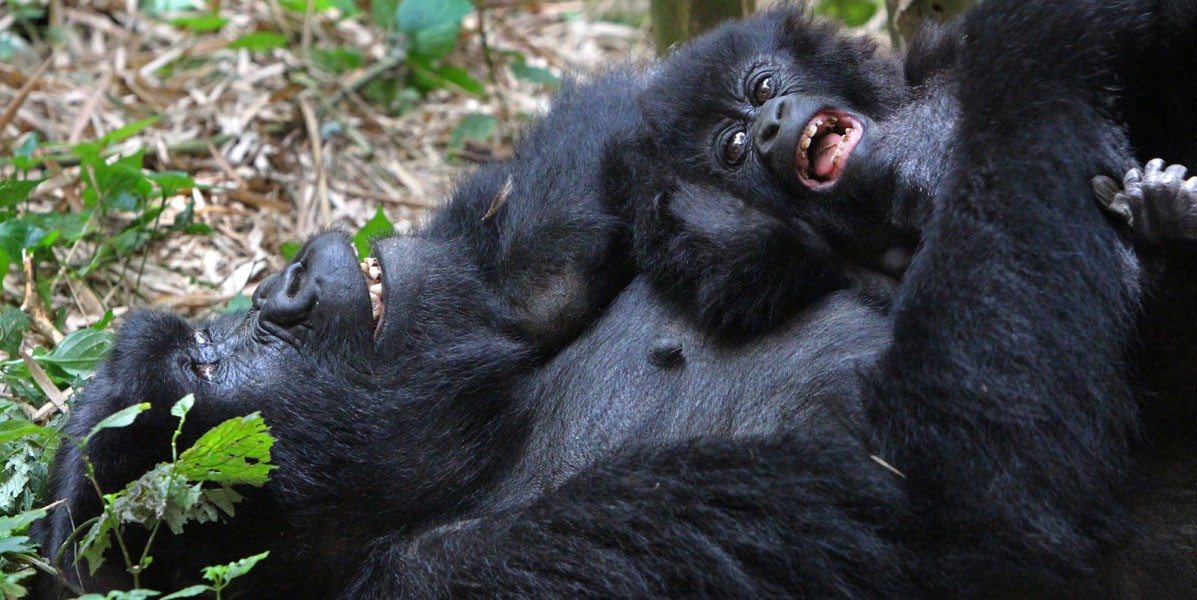
Essential information for your luxury gorilla safari
Whether you opt for a gorilla trekking safari in Rwanda or Uganda, it’s essential to know the following expert tips:
How hard are the treks?
Gorilla trekking can be challenging and a moderate level of fitness is needed as you hike through ancient African rainforests. In both Uganda and Rwanda there is no guarantee how long it will take to find the gorilla families (and therefore your trekking time), and the difficulty of treks varies depending on where the gorilla families are located on a given day.
Should I hire a porter?
Yes, definitely hire a porter! Porters are local to the community and help you during your trek. We recommend having at least one porter per person—they can carry your day bag and give you a hand on those steep climbs, so you feel less tired. I personally found this made the whole experience much more enjoyable! Their fees aren’t usually included in the tour, and you pay them directly, which means your money goes straight to the local community.
How long can we watch the gorillas?
Once your group have located your gorilla family, you have one precious hour observing these gentle giants, keeping a minimum of 7 metres away.
How many gorilla treks should I do?
Ideally, if you can, I would encourage you to do two treks. Many people who embark on a gorilla trek find themselves lost in the excitement of the first trek, snapping endless photos, eager to capture every second. But those who opt for a second trek often find it more fulfilling. The second time around, you’re less focused on documenting the moment and being more present and fully absorbing the gorillas’ behaviours, their family dynamics, and their reflective gazes. Each trek is different, and having that second experience allows you to feel the full depth of the encounter.
Ready to take the road less travelled?
